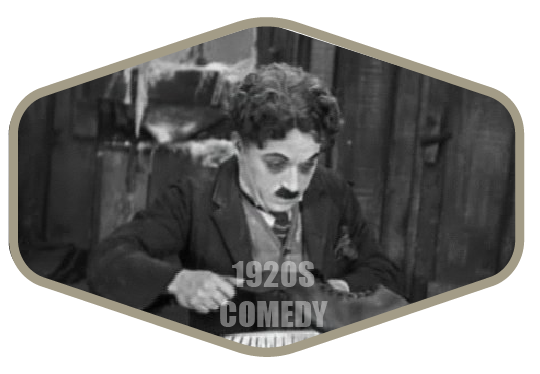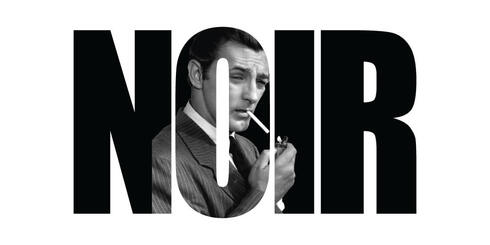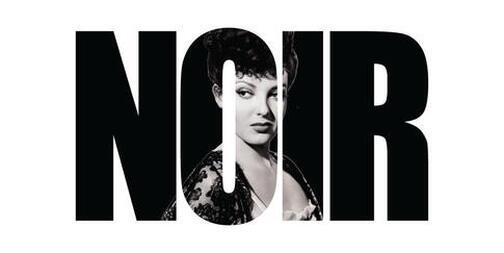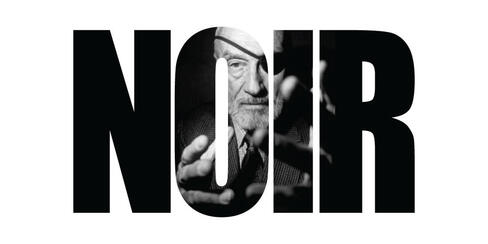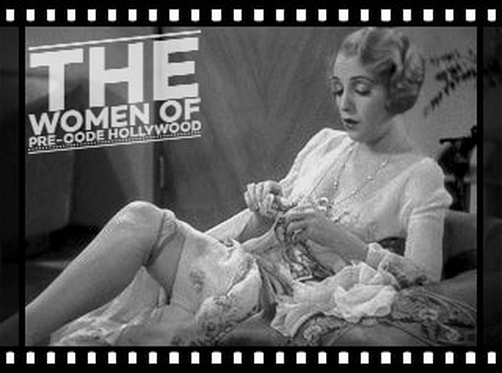The 1920s was a decade of change. It was the era of Prohibition, the Jazz Age, Flappers, the Charleston, and our troops were returning from Europe following World War I.
Silent films really began to flourish in the 1920s and became a formidable business half way through the decade, producing a capital investment of over $2 billion and in turn, 20 Hollywood studios.
The comedy genre is one of the oldest in film. Many of the first silent films were comedies as this medium was ideally suited for pratfalls, slapstick, pie-in-the-face, and other visual gags.
This era produced several comedic stars, among the most prolific were Charlie Chaplin, W.C. Fields, Buster Keaton and Harold Lloyd. Like many film actors working in this era, many got their start as Vaudeville, burlesque and even circus performers.
Max Sennett, an early film entrepreneur, founded Keystone Studios in 1912. Many actors began their film careers with Keystone. These actors include the aforementioned actors as well as, Harry Langdon, Marie Dressler, Bing Crosby, and of course The Keystone Cops. Wild, hair-raising car chases, pie-fights and countless other sight gags were the staples of Sennett's studio.
While Keystone Studios could not survive the Great Depression, nor flourish in the era of "talkies", what comedy they did produce is timeless by any standard - and would go on to inspire future generations of comedic actors.
Silent films really began to flourish in the 1920s and became a formidable business half way through the decade, producing a capital investment of over $2 billion and in turn, 20 Hollywood studios.
The comedy genre is one of the oldest in film. Many of the first silent films were comedies as this medium was ideally suited for pratfalls, slapstick, pie-in-the-face, and other visual gags.
This era produced several comedic stars, among the most prolific were Charlie Chaplin, W.C. Fields, Buster Keaton and Harold Lloyd. Like many film actors working in this era, many got their start as Vaudeville, burlesque and even circus performers.
Max Sennett, an early film entrepreneur, founded Keystone Studios in 1912. Many actors began their film careers with Keystone. These actors include the aforementioned actors as well as, Harry Langdon, Marie Dressler, Bing Crosby, and of course The Keystone Cops. Wild, hair-raising car chases, pie-fights and countless other sight gags were the staples of Sennett's studio.
While Keystone Studios could not survive the Great Depression, nor flourish in the era of "talkies", what comedy they did produce is timeless by any standard - and would go on to inspire future generations of comedic actors.
COMEDY FILMS OF THE 1920s
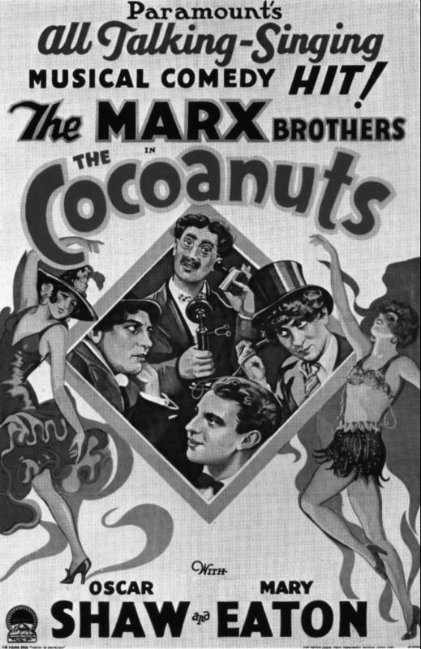 COCOANUTS, THE (1929)
COCOANUTS, THE (1929) (93 Min.) Genre: 1920 COMEDY, Transfer Quality: A
While The Four Marx Brothers (Groucho, Harpo, Chico and Zeppo) were appearing nightly on Broadway in Animal Crackers in the spring of 1929, they spent their days shooting their first film, The Cocoanuts, at Paramount's Astoria Studios in Long Island. Based on their 1925 stage hit, The Cocoanuts is set in Miami, where hotel manager Mr. Hammer (Groucho Marx) struggles to keep his establishment from going under. Hammer's only paying guest is Mrs. Potter (Margaret Dumont), whose daughter Polly (Mary Eaton) is in love with aspiring architect Bob (Oscar Shaw). Mrs. Potter would prefer that Polly marry the respectable Harvey Yates (Cyril Ring); what she doesn't know is that Yates is a jewel thief, in cahoots with the slinky Penelope (Kay Francis). The script was written by George S. Kaufman, and the music by Irving Berlin. — Hal Erickson
Starring: The Marx Brothers, Oscar Shaw, Margaret Dumont, Kay Francis | Directed by: Robert Florey, Joseph Santley
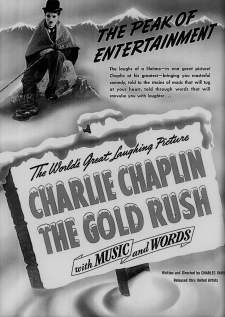 GOLD RUSH, THE (1925)
GOLD RUSH, THE (1925) (85 Min.) Genre: 1920 COMEDY, Transfer Quality: A
He may be called "The Lone Prospector" in The Gold Rush, but the character played by Charlie Chaplin is the same wistful, resourceful Little Tramp that had been entertaining the world and its brother since 1914. A most unlikely participant in the 1898 Yukon gold rush, Charlie finds himself sharing a remote cabin with two much larger and more menacing-looking prospectors: Big Jim McKay (Mack Swain) and Black Larsen (Tom Murray). Big Jim isn't really a bad sort, but Larsen is a murderer and thief. When the food supply runs out, Larsen heads out in the snowy wastes to hunt, leaving Charlie to prepare a delicious Thanksgiving dinner for Big Jim, consisting of roasted shoe. The days pass: in a delirium, Big Jim imagines that Charlie is a huge chicken, and voraciously takes after him with an axe; Charlie saves himself by inadvertently shooting a bear, thereby providing enough food for ten men (Chaplin's inspiration for this episode was the cannibalistic activities of the Donner Party). When the winds subside, Charlie and Big Jim part company. Charlie heads off to seek his fortune in a nearby gold-rush community, while Big Jim lucks upon a "mountain of gold" -- just before he is ambushed and knocked unconscious by Black Larsen. Larsen himself is then killed by an avalanche, leaving Big Jim to wander aimlessly, his memory gone. Meanwhile, Charlie has fallen in love, from afar, with self-reliant saloon girl Georgia (Georgia Hale) who doesn't know that he exists. By a fluke, Charlie and Georgia meet, whereupon Charlie invites the girl to New Year's Eve dinner in the cabin that he is tending for a local prospector. While preparing for dinner, Charlie imagines that Georgia has arrived with her friends; he entertains the girls by jabbing two forks in two rolls, then performing a captivating little "dance" with the pastries. Awakening from his dream, Charlie disconsolately realizes that Georgia has forgotten all about his little party, and isn't going to show up. The next day, Big Jim arrives in town and is shaken out of his amnesia when he spots Charlie. Hoping that the little prospector will help him find his mountain of gold, Big Jim heads back to the mountains with Charlie in tow. The two men nearly come to grief when their cabin, blown by the wind to a mountain precipice, leans precariously over the edge--a peril intensified when Charlie, clinging to the floor, develops a sudden case of hiccups
Starring: Charles Chaplin, Georgia Hale, Mack Swain, Henry Bergman, Malcolm Waite | Directed by: Charles Chaplin
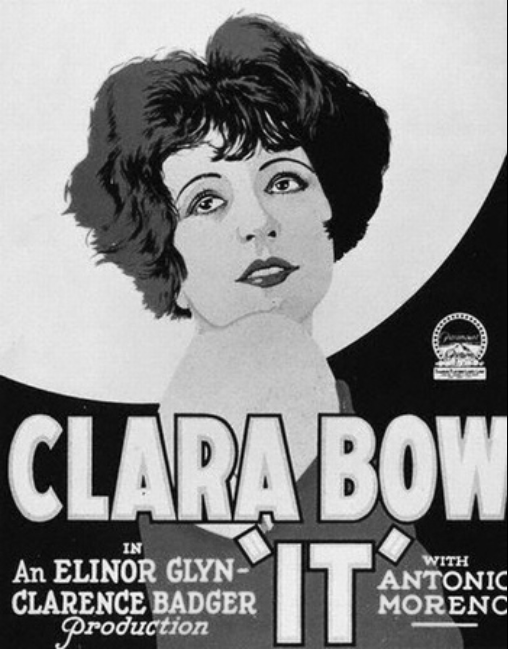 IT (1927)
IT (1927) (72 Min.) Genre: 1920 COMEDY, Transfer Quality: B
Contrary to popular belief, Clara Bow was already Paramount's biggest box-office draw when she starred in this delightful rags-to-riches comedy. But It, from the fertile mind of bizarre best-selling author Elinor Glyn, remains perhaps the quintessential Bow picture. Not that the story of a poor shopgirl falling for her rich employer was anything new (by 1927, Bow could play that role in her sleep), but It came complete with one of the best publicity campaigns in Hollywood history. Glyn herself publicly pointed to Bow as the personification of It, "that quality possessed by some which draws all others with its magnetic force." Paramount made sure that Glyn's lofty description of the word sunk in and even convinced the author to explain It in the film to leading man Antonio Moreno (who, according to Glyn, simply oozed It as well). The lightweight comedy behind all this hoopla centered on little Betty Lou Spence, a vivacious salesgirl invited to dinner at the Ritz by foppish wastrel and self-described "old fruit" "Monty" Montgomery (William Austin in one of those roles later personified by Edward Everett Horton). Betty is not paying attention to her dinner companion, however, but is ogling department store heir Cyrus Waltham (Moreno). He notices her too, and takes the salesgirl on a whirlwind tour of Coney Island. But when Betty is mistakenly assumed to be the unmarried mother of an infant (actually her roommate Molly's), stern Cyrus no longer sees her as proper marriage material. Betty, of course, gets her man in the end and Waltham's snooty girlfriend ("other woman" specialist Jacqueline Gadsden) ends up in the drink. Delivering all the vivacious punch expected of a Bow comedy, It takes time out for a couple of rather poignant scenes. With the hindsight that Brooklyn's own Bow was never fully accepted by Hollywood society despite her stardom, it is touching to watch Betty being ostracized at the snobbish Ritz; and Bow is never more affecting than when she realizes that Moreno is offering diamonds and pearls instead of marriage. Priscilla Bonner, as Bow's drab, single-mother roommate, adds a touch of realism to her brief role, enviously observing Betty's frivolity. If It only added to Bow's brilliant success, the film did little for the intelligent Bonner. To the end of her life, Bonner maintained that accepting featured billing in It lost her any chance of true stardom. A very young Gary Cooper, has a bit as a reporter and director Josef Von Sternberg reputedly took over for Clarence Badger during a brief illness. Despite its rather trite Cinderella plot, It magnificently demonstrates why Bow's guileless flapper came to define an entire decade. It is heartbreaking to realize that her decline had already set in, and Bow's very public troubles and eventual career destruction were lurking right around the corner!
Starring: Clara Bow, Antonio Moreno, William Austin, Priscilla Bonner, Gary Cooper, Jacqueline Gadsdon | Directed by: Clarence G. Badger / Josef von Sternberg
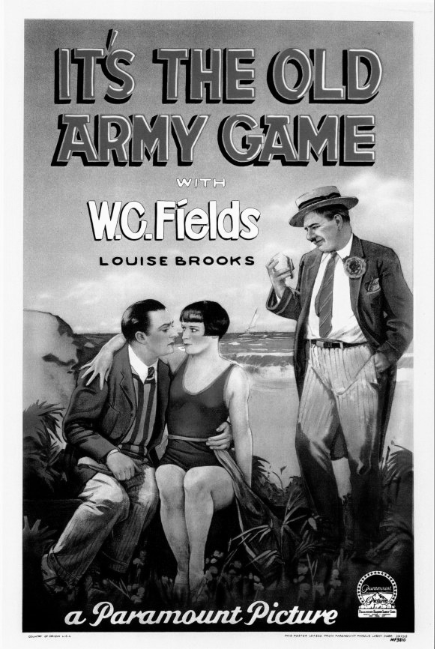 IT'S THE OLD ARMY GAME (1926)
IT'S THE OLD ARMY GAME (1926) (75 Min.) Genre: 1920 COMEDY, Transfer Quality: A
W.C. Fields' It's the Old Army Game is an expansion on four Fields stage skits, originally performed in the Broadway revue The Comic Supplement. Described in the opening title as "the epic of the American druggist," the story begins late one night, in the apothecary shop of Elmer Prettywillie (Fields) in Ocala, Florida (where the film was location-shot). Aroused from his slumbers by a frantic customer (Elise Cavanna), Elmer discovers that all the woman wants is a two-cent stamp — which she doesn't pay for. Attempting to mail her letter, the woman inadvertently sets off a fire alarm, which brings the local fire brigade to Elmer's store. The minute they leave, a real fire breaks out, which Elmer has to extinguish himself. Trying to get back to sleep on the back porch of his store, poor Elmer is continually awakened by the sounds of the neighborhood, ranging from a squalling infant to a steady stream of street vendors. After a hectic and typically profitless day behind the counter of his store, Elmer takes his family on a picnic, during which he ends up on the grounds of a Florida estate which he hopes to purchase. Only after nearly wrecking the grounds does Elmer discover that the property is not for sale. Cult figure Louise Brooks, then the wife of director Eddie Sutherland, plays Elmer's counter assistant Marilyn. It's the Old Army Game was remade as It's a Gift (1934) while certain plot elements and gags resurfaced in Fields' talkie 2-reeler The Pharmacist (1932).
Starring: W.C. Fields, Louise Brooks, Blanche Ring, William Gaxton | Directed by: Edward Sutherland
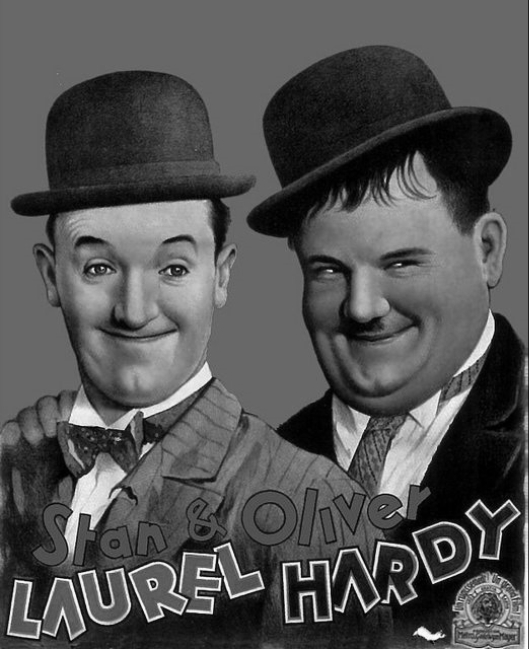 LAUREL & HARDY SHORTS: BIG BUSINESS, BATTLE OF THE CENTURY, DOUBLE WHOOPEE, YOU'RE DARN TOOTIN' (1927, 1929, 1929)
LAUREL & HARDY SHORTS: BIG BUSINESS, BATTLE OF THE CENTURY, DOUBLE WHOOPEE, YOU'RE DARN TOOTIN' (1927, 1929, 1929) (20, 24, 19 Min.) Genre: 1920 COMEDY, Transfer Quality: B
BIG BUSINESS: Ollie and Stanley are two Christmas Tree sales reps who get into one of their usual mutual destruction fights with a homeowner. BATTLE OF THE CENTURY: Laurel is Canvasback Clump, an underfed and thoroughly clueless prize-fighter, and Hardy his rather overly optimistic manager. In confronting his ape-like opponent, Thunder-clap Callahan (Noah Young), Canvasback is quickly out for the count and the boys are left with the five-dollar loser's end of the purse. Later, considering their bleak prospects in the park, they encounter a smooth-talking insurance salesman (Eugene Pallette), who talks them into taking out a five-dollar accidental injury policy on Canvasback. After seeing his friend almost slip and fall, his manager decides to take matters into his own hands -- hurling banana peels into his pal's path. Instead, he topples a pie seller exiting a bakery -- thus inciting the silver screen's first real pie fight -- and arguably it's most inventive and funny. An about average Laurel and Hardy short until the extravagant climactic blowout, it was made near the start of their collaboration and helped prompt their swift rise as worldwide favorites. The pie fight itself, building methodically and hilariously to all-out Armageddon, has been endlessly copied but certainly never equalled. The short's early boxing sequences laid the groundwork for portions of Any Old Port (1932), a later Laurel and Hardy three-reeler. DOUBLE WHOOPEE: A hotel is gearing up to welcome its prestigious new guest, a European Prince (Captain John Peters). But before he appears, Stan Laurel and Oliver Hardy walk in. After much confusion, it is discovered that the two are not the Prince and his Prime Minister, but are the hotel's new doorman and footman. The real Prince grows ever more furious as he falls into the elevator shaft numerous times, always because of either Stan or Ollie. Finally the boys take their positions outside the hotel, where they irritate a taxi driver (Charlie Hall) and a policeman (Tiny Sanford). Stan, Ollie, and the cabbie proceed to destroy each other's uniforms, until the cabbie accidentally grabs the policeman's jacket. The cabbie takes off, and another taxi appears. A sexy blonde (Jean Harlow) emerges and is personally escorted by Ollie. What he doesn't know is that Stan shut the cab's door on her dress and it has ripped right off. Finally, he sees what has happened, and, horrified, he removes Stan's coat to cover up the young lady. The boys start bickering, and soon the whole lobby is in an uproar. The Prince comes in and gets in the way of a flying cake. Nearly rabid with anger, he swears to report this indignity to the King and Queen -- then falls into the elevator shaft once again. This two-reel silent is best remembered for the scene in which Jean Harlow's dress is caught in the taxi cab door. Harlow doesn't appear in a later Laurel and Hardy film, Beau Hunks, but a still photo of her from Double Whoopie does, and she's identified there as "Jeannie-Weenie," Ollie's faithless girlfriend. YOU'RE DARN TOOTIN': This classic Laurel and Hardy comedy is famous for the pants-ripping scene at the end, but the other parts of it are just as funny. Laurel plays the clarinet, and Hardy plays the French horn in a band. During a concert, they destroy a musical performance and drive the conductor crazy. Fired from their job, they return to their boarding house for dinner where the landlady reminds them, "In the excitement of having a job, you have overlooked 14 weeks board bill," and she evicts them when she discovers that they are no longer employed. They have little success working as street musicians, and in frustration, they break each other's instruments, kick each other, and rip off each other's clothing. This grows into a huge street battle where many men are kicking each other and ripping each other's pants. The final pants-ripping scene is not funny just because so many men lose their pants, but because Laurel and Hardy come up with inventive ways to pull more innocent bystanders into the fray.
Starring: Stan Laurel, Oliver Hardy, Jean Harlow | Directed by: James W. Horne, Clyde Bruckman, Lewis R. Foster, Edgar Kennedy
 LAUREL & HARDY SHORTS: PIE-EYED, THE SAWMILL, WEST OF HOT DOG (1925, 1921, 1924)
LAUREL & HARDY SHORTS: PIE-EYED, THE SAWMILL, WEST OF HOT DOG (1925, 1921, 1924) (20, 1-Reel Min.) Genre: 1920 COMEDY, Transfer Quality: B
PIE-EYED: For the whole two reels of this comedy, Stan Laurel plays a drunk, and, while some have compared this film to Charles Chaplin's One A.M., in reality it's nowhere near as funny. Stan's drunkenness completely disrupts the goings-on at a nightclub, and finally the club's owner (Glen Cavender) throws him out. A cop finds the helpless, inebriated Stan and escorts him home -- except that he's taken the address from a card in Stan's pocket, and it's the business card of the nightclub owner. When the nightclub owner comes home and finds Stan in his bed, all hell breaks loose, but Stan manages to escape both his antagonist and the cops. Although this is not one of Laurel's best comedies as a solo artist, it does have its moments -- one of the funniest happens almost completely out of camera frame. The nightclub owner, fed up with Stan, makes him stand up. The two men can only be seen from the chest down, with the nightclub owner's arm swinging. When Stan sits down again, he has a black eye. THE SAWMILL: Comedians Larry Semon and Oliver Hardy battle over Kathleen O'Connor, the belle of the logging camp, in this 2-reel farce co-directed by Semon and Norman Taurog. The always extravagant Semon went too far making this film on location at Sequoia National Forest, where he made the Vitagraph Company build a permanent logging camp. According to the company's owner, Albert J. Smith, the film could just as easily have been produced at the studio back lot in Los Angeles. As a result, Semon's new contract made him his own producer and he was henceforth obliged to pay the cast, crew, and various other production expenses out of his own pocket. Years before he found world wide fame opposite Stan Laurel, Oliver Hardy honed his comedic skills playing a menace opposite the white-faced Semon. They worked well together and remained personal friends until Semon's early death from pneumonia in 1928. WEST OF HOT DOG: Before teaming up with Oliver Hardy, comedian Stan Laurel starred in a number of very funny parodies. He burlesqued Rudolph Valentino's Blood and Sand with Mud and Sand and Monsieur Beaucaire with Monsieur Don't Care. Here the Western West of the Pecos undergoes a comic transformation. Stan plays an eastern wimp who is headed West to claim an inheritance. But the stagecoach he is on gets held up and his silly behavior in front of the bandits does not impress the girl (Julie Leonard) who is also a passenger. When he arrives in town to hear the reading of the will, he discovers that the other heirs happen to be the bandits, who will get full possession of the estate in the event of Stan's unfortunate demise. Of course the bad guys try to make sure this happens as quickly as possible. Stan leaves town to save his life, but his hiding spot is invaded by the bandits, who have just robbed the saloon. Somehow -- more through the villains' ineptitude than from any bravery on Stan's part -- he rounds up the bad guys before the posse arrives. The girl from the stagecoach turns out to be the sheriff's daughter, but now that she is willing to be Stan's girl, her father wants nothing more to do with her.
Starring: Stan Laurel, Oliver Hardy | Directed by: Percy Pembroke / Joe Rock, Larry Semon / Norman Taurog, Percy Pembroke
 LAUREL & HARDY SHORTS: WE FAW DOWN, FROM SOUP TO NUTS, THE LUCKY DOG, LEAVE 'EM LAUGHING (1928, 1922, 1928, 1928)
LAUREL & HARDY SHORTS: WE FAW DOWN, FROM SOUP TO NUTS, THE LUCKY DOG, LEAVE 'EM LAUGHING (1928, 1922, 1928, 1928) (20, 24, 18 Min.) Genre: 1920 COMEDY, Transfer Quality: B
WE FAW DOWN: Laurel and Hardy want to slip out of the house and play poker. Their wives want them to stay home, so they make up a story about having to meet their "boss" at the Orpheum Theatre. On the way to the poker game, they run into two women who have lost a hat under an automobile. While they attempt to retrieve the lady's hat, a street-sprinkler soaks them with water. Soaking wet, they go to the girls' apartment while their clothes dry out, and while waiting, the girls flirt with them. Unfortunately, boxer "One-Round Kelly" is the boyfriend of one of the girls. He bursts in on the two couples and chases the boys from the apartment. Meanwhile, a fire has burned down the theatre that day, and Laurel and Hardy have a lot of explaining to do when they return home. While this film is only an average comedy, it is still worth a look. Laurel and Hardy's explanation of the "show" and why they didn't know about the fire, is priceless. THE LUCKY DOG: In this two-reeler, Stan Laurel and Oliver Hardy appear together for the very first time. However, they're a long way from their famous Laurel and Hardy characters (that pairing wasn't to come until 1927). Laurel, after an up-and-down career in Vaudeville, had just begun acting in films, while Hardy was heavily established in movies already (both literally and figuratively). Laurel is the lead in this film, nevertheless, as an unfortunate who, after being evicted, winds up befriending a stray dog. He stuffs the dog in a decrepit suitcase, but it sticks its legs through the bag's holes and runs away. While Laurel is chasing after the suitcase, he bumps into a hold-up man (Hardy). A chase leaves the big man behind when he gets stuck trying to crawl through a hole in a fence. Hardy also appears later on in the film. Laurel and his dog have made the acquaintance of a pretty girl and her poodle, and her jealous boyfriend enlists Hardy's help to get rid of Laurel. But the dog saves the day by chasing the villains off with a stick of dynamite that was originally meant for Laurel. The film was made in 1919 but not released until 1922. FROM SOUP TO NUTS: Mr. and Mrs. Culpepper (Tiny Sanford and Anita Garvin, respectively) are a nouveau-riche couple who are throwing a fancy dinner party. Unfortunately for them, the waiters they have hired for the evening are Laurel and Hardy. The subsequent gags run from typical (Ollie destroys a cake) to the hilariously literal (when Stan is ordered to serve the salad undressed, he obliges and has only his long underwear on when he brings out the greens). This two-reeler offers one of Anita Garvin's finest moments in her Laurel and Hardy film career -- she has a long-running battle trying to nab a maraschino cherry while keeping her tiara out of her eyes. Director E. Livingston Kennedy is better known as Edgar Kennedy, the actor who most often played cops in the Laurel and Hardy films. This is one of only two films he directed for the boys; the other one was You're Darn Tootin'. Many of the situations in From Soup to Nuts were repeated at the start of 1940's A Chump at Oxford. LEAVE 'EM LAUGHING: Leaving the dentist's office, where Hardy's teeth have been extracted by mistake, the boys, still under the influence of laughing gas, meet up with a traffic cop (Kennedy) and cause a huge traffic jam.
Starring: Stan Laurel, Oliver Hardy | Directed by: Leo McCarey, Jesse Robbins, Edgar Kennedy
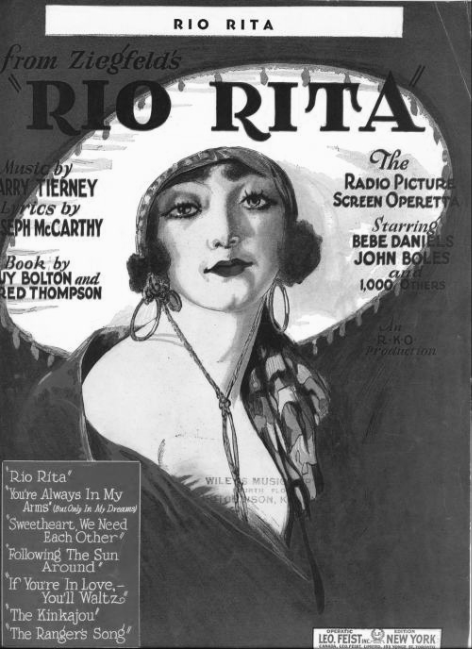 RIO RITA (1929)
RIO RITA (1929) (105 Min.) Genre: 1920 COMEDY, Transfer Quality: B
Rio Rita, an expensive filmization of the legendary Florenz Ziegfeld-produced Broadway musical of 1928, was the first major production for fledgling RKO Radio Studios. Bebe Daniels plays Rita, an Irish-Mexican girl (with thick Hispanic accent) who oversees a large ranch near the Mexican border. Rita's brother (Don Alvorado) is suspected of being "The Kinkajou," a notorious bandit. On the trail of the Kinkajou, an undercover Texas Ranger (John Boles) falls in love with Rita, much to the chagrin of a wealthy but despotic landowner (Georges Renavent). The villain arranges to make it appear that the Ranger is the Kinkajou, prompting Rita to consent to marriage with the cad in order to save her lover's life. The true identity of the Kinkajou is revealed at a lavish costume party, filmed in early Technicolor. Counterpointing the main plot are the antics of Bert Wheeler and Robert Woolsey, comic carryovers from the original Broadway show. Wheeler is in Mexico to arrange a quickie divorce so that he can marry his true love (Dorothy Lee). Woolsey is Wheeler's shady lawyer, who learns too late that he can't make the divorce stick. Wheeler and Woolsey have some of the film's best moments, including a riotous drunk scene and a closing musical number wherein they slap one another as their girlfriends sing inanely into the camera. Rio Rita not only made oodles of money for RKO (it was being regularly reissued throughout the 1930s), but it solidified the popularity of Wheeler and Woolsey, who'd become the studio's biggest comedy stars of the early 1930s. 1929's Rio Rita was withdrawn from circulation when MGM bought the rights for a 1942 remake, this one starring Abbott and Costello. Available only for museum screenings during the past five decades, Rio Rita has recently been released on videocassette, with its rare Technicolor sequence intact.
Starring: Bebe Daniels, Sam Nelson, Fred Burns, John Boles | Directed by: Luther Reed
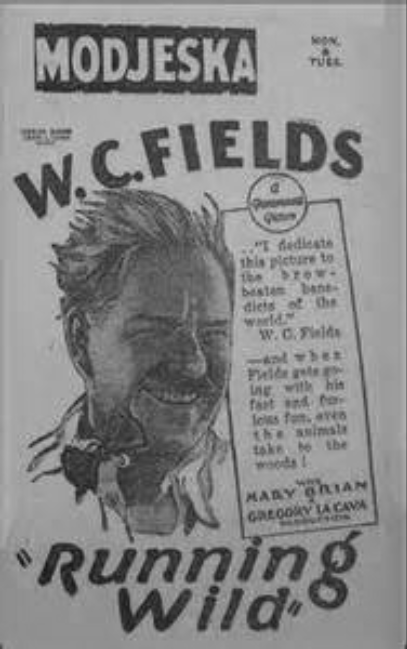 RUNNING WILD (1927)
RUNNING WILD (1927) (68 Min.) Genre: 1920 COMEDY, Transfer Quality: B
Running Wild bears a marked resemblance to One Glorious Day, a 1923 Will Rogers vehicle. W.C. Fields stars as a henpecked family man, browbeaten both at home and at work. Only his daughter Mary Brian truly cares about Fields, and he reciprocates by showering most of his familial affection on her. While attending a vaudeville show, Fields volunteers to subject himself to a stage hypnotist. While under a hypnotic spell, Fields' worm turns, and he becomes an aggressive "King of the Castle" type with his family and his employer. Once the spell is broken, Fields reverts to his meek self—then discovers that his boss, impressed by his go-getting "alter ego," has offered him a better position at higher salary. Putting his selfish family in their proper place, Fields remains the don't-mess-with-me tyro that he'd been while hypnotized, and in so doing smooths the path of the romance between daughter Brian and her handsome beau Claude Buchanan. Considering the potential of the actor/director team of W.C. Fields and Gregory LaCava, Running Wild isn't quite as wonderfully anarchistic as we'd like it to be, but Fields (sporting the obnoxious little mustache that he favored in his silent films) is always a delight to watch, especially when venting his pent-up rage against his impossible family. The actor would rework many of the elements in Running Wild into his 1935 talkie Man on the Flying Trapeze, which also co-starred Mary Brian.
Starring: W.C. Fields, Mary Brian, Claud Buchanan, Marie Shotwell | Directed by: Gregory La Cava
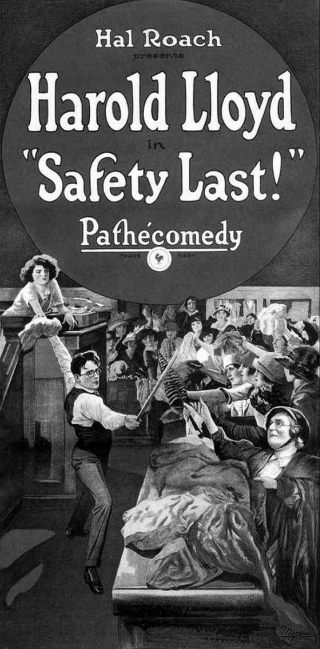 SAFETY LAST (1923)
SAFETY LAST (1923) (5-Reels Min.) Genre: 1920 COMEDY, Transfer Quality: A
After Charlie Chaplin and Buster Keaton, the silent film era's "third genius" was Harold Lloyd, who stars in this Horatio Alger-style story of an average country boy trying to make good in the big city. The Boy (Lloyd) leaves his sweetheart, The Girl (Mildred Davis, later the real-life Mrs. Lloyd) in Great Bend while he pursues his fortune in a teeming metropolis. The Boy lands a job as a clerk at a fabric counter of DeVore's, a huge department store, but he lies in his letters home to his beloved, pretending to be the store's manager and spending his earnings on lavish gifts. The Boy's roommate, The Pal (Bill Strother) makes money as a "human fly," performing attention-getting stunts. Promised $1,000 by DeVore's real manager if he can devise a publicity gimmick, The Boy convinces his friend to climb the 12-story establishment and split the winnings with him. On the day of the event, however, The Pal is busy dodging The Law (Noah Young), forcing The Boy to make the arduous climb solo. Dodging a variety of obstacles, The Boy climbs higher and higher, eventually dangling from the store's clock tower, in the film's most memorable image. — Karl Williams
Starring: Harold Lloyd, Mildred Davis, Bill Strother, Noah Young | Directed by: Fred Newmeyer, Sam Taylor

